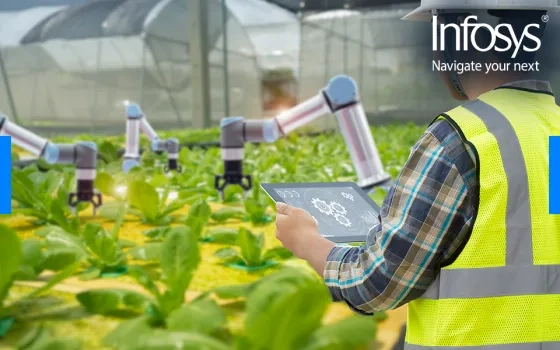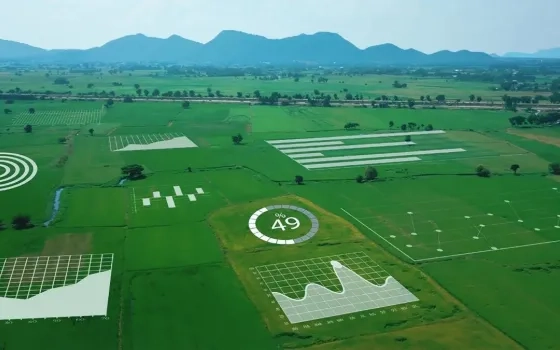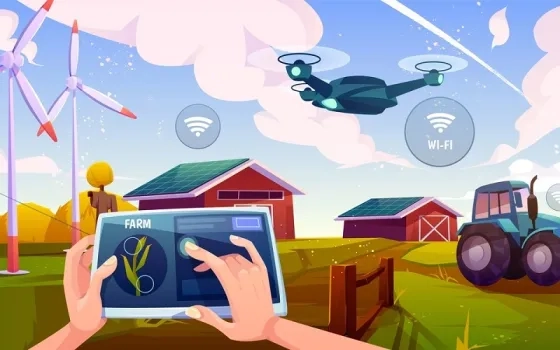Have you heard of the story of Procrustes from Greek Mythology?
Procrustes (“Stretcher”) was the nickname of Damastes, a rogue smith and bandit, who owned a small estate in Atticca of Ancient Greece. He earned his notorious nickname from a bizarre hospitality ritual he inflicted on his unwilling passer-by guests who passed by his estate every night.
At first, he invited them to join him for a sumptuous dinner and then requested them to spend the night in his special iron bed.
There was one problem though.
He was extremely particular (to the point of being anal) that the special bed fit the guests to perfection. Those who were tall had their legs chopped off and those who were short were stretched by his smith’s hammer.
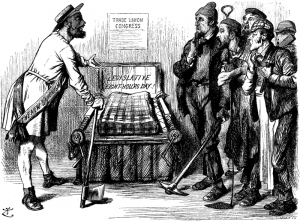
Image Source: WikiMedia Commons
And so one day, when a fearless traveler called Theseus (The name should ring a bell if you are familiar with Greek Mythology) passed by, he invited him as well to dinner. Theseus lived up to his name and killed Procrustes by making his own body fit his bed. Poetic Justice delivered.
There is no doubt this mythical tale sounds repulsive. Who would do such a thing? Who would take something alive that doesn’t fit and make it fit?
We do this all the time.
Whenever we are dealing with an extremely complex problem with our limited knowledge, without understanding the phenomena that remain seen and unseen, we succumb to the anxiety and release our tension by chopping the problem into sensible categories which make it easier for us to grasp and solve the problem.
Here is an equally bizarre tale from the real world, closer home.
The sad case of student suicides in India’s premier engineering institute, the Indian Institute of Technology.
If you’ve been following the news, you would be familiar with the fact that suicides inside IIT campuses have been a regular affair since the sixties. In 2010, when this news was widely reported, a committee was formed to probe the reasons behind the spate of suicides.
Someone from the committee shared their findings with a local newspaper.
“We have a strong reason to recommend the replacement of ceiling fans with the pedestal fans in the institute hostels. By replacing the ceiling fan with pedestal fans, we can at least remove one option for students who are depressed due to some reasons or the other.”
Sure, when seen at one level, this might sound like a pragmatic step. But if you think deeply, questions start emerging like termites crawling out of the woods.
How do you address the anxiety of wanting to solve such an intractable problem of bright younglings struggling to survive with “[the]daily grind becoming more difficult with time“?
Yes, those were the words used by a 22-year old from IIT Hyderabad who committed suicide earlier this year.
In dealing with such a scenario, isn’t it tempting to rush towards solving the problem by addressing the proximate dimensions of “how” the problem manifests, without thinking deeply about its unintended consequences and “why” the problem exists in the first place ?
This “Solving a problem by chopping it” mindset is so prevalent across many domains that I think it deserves a name: Celing Fan Fallacy
Ceiling Fan Fallacy:
That situation when you deal with the anxiety of addressing a complex problem with limited knowledge by chopping the problem and addressing the specific dimension of how the problem manifests.
Take the case of spurious pesticides in agribusiness.
This problem has been well extremely well analyzed and documented by the industry. Here is a crisp presentation about the types of frauds that occur across Crop Protection and Seeds Industry, as spelled out by Arjo solutions here.
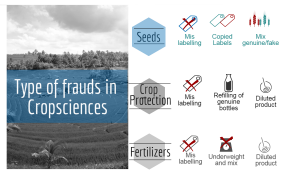
During one of my LinkedIn conversation with Raju Kapoor, Director of Corporate Affairs, FMC, who had recently participated in a FICCI national round table on counterfeit pesticides, he shared that the overall loss to the industry due to this issue was pegged at Rs. 30000 crores annually.
Almost every key industry player from the agri-input sector has been working diligently to address various parts of the problem.The problem of awareness and spreading the understanding of the impact of spurious pesticides on the farmer’s yields and consumer and environment. Or the problem of lax regulatory regimes which lead to the proliferation of spurious pesticides.
The Product Security Team at Syngenta has been running the Detect and Report Program to build awareness of potential intellectual property infringement cases. In 2016 alone, as per their website, there were 752 cases globally.
Same is the case with BASF, who have been using modern technologies such as QR/Datamatrix codes, embossed brand logos, and relentlessly investigating and strongly responding to cases of counterfeiting of BASF products. During a recent FICCI program, a unique exhibition of more than 500 samples of reputed brands and their duplicate samples were presented.
And despite all of these efforts to build awareness of the magnitude of the problem and address it among all the key stakeholders, including the governement, the spurious pesticide menace refuses to go away.
I am going to put my head out and assert that this problem will never go away.
Let me present to you my three reasons.
1) The Channel doesn’t have the adequate skin in the game yet to sell authentic pesticides to farmers.
To have a meaningful conversation about this, let me first draw the value chain network of interactions which happen between the parties involved in the sale of spurious pesticides.
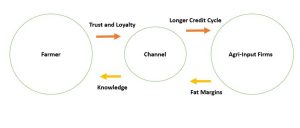
To those who are familiar with how agri-input marketing works on the ground, this graphic must be obvious, barring a few nuances. Nevertheless, let me elaborate the value network flow in detail.
Despite all the marketing agri-input firms do on the field through their field staff, it’s obvious that the farmer reposes trust and loyalty mostly towards the channel – dealers, distributors and retailers – for a simple reason. It is the trade channel which offers credit to farmers through a written slip to buy seed or pesticides.
The trade channel, by the virtue of their relationship, has a strong grip over the catchment of farmers who are credit worthy, and it is this exclusive relationship which earns the high margins they enjoy for Pesticides, Herbicides, Fungicides, Plant Growth Regulators products- what my friend Jagadeesh Sunkad calls as “Good to Have” products – from agri-input manufacturers.
Talking of margins, here are two key facts from FICCI’s report.
- Price of the non-genuine / illegal product may be up to 30-40% lower than the authentic brand which attracts farmers to use these non-genuine / illegal products.
- Margin on non-genuine / illegal products is very high (as much as 25-30%) as 24 compared to 3%-5% in branded products. This incentivizes retailers to push non-genuine / illegal products.
(Aside: You can read my detailed interview with Jagadeesh where we speak about the dual categorization of “Must Have” and “Good to Have” agri-input products in detail and explore how it impacts the buyer behaviour dynamics and sales/marketing strategies here)
Puneet Singh Thind, a farmer from Haryana and convenor of Rashtriya Kisan Sangathan, in an interview with Ruralmarketing.in spelled this out lucidly.
“[With] lack of awareness, farmers easily prefer non-genuine pesticides if a retailer gives 90 days credit on fake products and only 30 days credit or maybe no credit on genuine products”
Think about it.
Even if there is adequate awareness about the harmful effects of the pesticides on the crop, farmer and environment, would it be possible for the farmer to take a rational decision concerning the use of spurious pesticides amidst his power equation with the channel?
Since spurious pesticides exist in a spectrum of admixture of genuine and fake chemicals, I have personally heard of instances where farmers have been provided by retailers with a portfolio combination of branded product for select number of sprays and fake products with limited chemical potency for the remaining number of sprays to optimize costs.
This point is critical because the easiest way to misread my perspective is to believe that I am painting the trade channel as a villain here, when all I am stating is this.
The Channel values its relationship with farmers more than its relationship with the agri-input manufacturers.
Now, if you look into the interaction flows between the channel and the agri-input firms, this point would be clear. When the cost of the credit is owned by the Agri-Input manufacturers, thanks to the fat margins the channel demands from the agri-input manufacturers for placing their products to the farmers, the channel is going to value its relationship with farmers more than the agri-input manufacturers.
Let us summarize our understanding so far.
The Trade Channel earns its fat margins based on the specialized recommendations it provides to the farmers, and also enjoys long credit cycles with the agri-input manufacturer. It is at this juncture we need to understand what “Skin in the Game” means.
Although it may seem so, by “Skin in the game”, I am not just referring to “incentives”. I am talking about a fundamental assymetry between rewards and risks. If you have the rewards, you must also get some of the risks, and not let others pay the price of your mistakes.
Aside: Thank you Nassim Nicholas Taleb for teaching me this. I strongly recommend his latest book, “Skin in the game” for a deeper dive into this notion.
Today, with the current market dynamics, there is a fundamental assymetry between the rewards Channel gains from the agri-input manufacturers and the risks it outsources to the manufacturers for the spurious products it sells to the farmers.
As long as this structural assymetry exists, counterfeit pesticides menace will never go away.
2) Technology can do its best to predict counterfeiting before the sale and report counter-feiting after the sale in the channel. However, no solution is fool-proof.
Talking of skin in the game, it would be appropriate to put my own skin in the game here upfront.
My firm iConcept has been providing Traceability and Agribusiness Intelligence solutions with QR code in the Agri-Input supply chain to address some of the toughest challenges in the channel and the field for several years with some of the world’s leading agri-input firms.
To understand the limitations of the QR code, let me start with showcasing the complete workflow of our m-PIN Bar-coding Solution approach, which has now become the industry norm in crop protection industry.
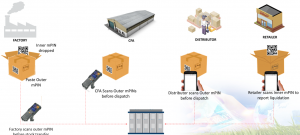
When a counterfeiter chooses to create a fake/fascimile product, by manufacturing non-genuine pesticides, they typically visit villages to purchase genuine, branded empty bottles from the farmers or retailers/distributors/dealers. As per FICCI study, they offer prices as high as 25% of the M.R.P written on the bottle.

Image Credits: FICCI Report on Counterfeit pesticides
Now, when you are buying a branded bottle, you are also going to use the QR code which comes with the SKU of the product. If the counterfeiter had bought the product from the farmer, this QR code would have been consumed (or in other words, already updated in the server as a sale transaction) in the system. Or if the counterfeiter had bought the product from retailer/distributor, then the QR code wouldn’t have been consumed in the system.
Now, when a fake product is being sold at a retail counter, it is the retailer who will decide whether to place the original or the fake one to the farmer for the validation of the authenticity. It is this uncertainty which makes it impossible to predict counterfeit transactions before the sale using QR code.
It is important here to understand that the QR code scanning for authenticity has to tie in with the sales process for the workflow to be robust in reporting counterfeit sales, post-facto.
Thus, the best way to address this uncertainty is to empower the farmers and make it easier for them to report fake products through various means. By means of validating SMS code in the bottle. Or by means of simple diagnostic kits to test the chemical efficacy. Or by means of a unique packaging that has been already communicated to the farmers and harder to replicate by counterfeiters.
Talking of uncertainty in predicting the counterfeit transactions, I am no way implying that all counterfeit sales happen through retailers and channel partners. I have heard of counterfeit sales happening efficiently through extension field staff, whose activities are largely untracked, and who have better understanding of the last mile networks of villages and taluks.
Marketing Plug Alert: At iConcept, we have built a robust field-staff activity tracking platform called PMC ( Productive Market Cluster) which provides a robust, systematic platform to assign, track and monitor the performance of field marketing activities and makes it easier for agri-input sales/marketing executives to measure the ROI of field marketing activities. This platform has been used by some of the leading agri-input firms and I am happy to elaborate more if you are facing such challenges.
Now that we have talked about the efficacy of QR code in reporting the counterfeit transactions in the channel, is it possible to predict counterfeit transactions before the sale has happened?
If you get into the depths of the afore-mentioned QR code workflow, you would understand that at each and every step of QR code scanning, when you start adding information about date and time of scan, location of scan, you can build an algorithm that can predict a likely spurious sale transaction based on the information trail available in the network.
To summarize our discussion so far, QR code solutions work fairly well to predict and report transactions. However, your solutions are never going to be fool-proof for the edge cases.
3) Even Digital Giants like Amazon, Alibaba haven’t yet cracked the counterfeiting problem
Sorry to be the bearer of bad news.
Yes, it is a fact that both Amazon and Alibaba are facing humongous challenges when it comes to selling counterfeit goods online. This problem is currently more pronounced with Alibaba than Amazon, and I am not going into too much details here, but I think the larger point needs to be spelled out loud and clear.
Despite the technological advancements that we see in our midst, counterfeiting problem has acquired more far more complexity in the online world, than when compared to the offline world.
So can digital farming platforms address the counterfeiting pesticide menace?
Honestly, I don’t know.
Today, emerging digital farming technologies are making it possible to build direct relationship with farmers and provide credit, based on the data underwritten by the digital platforms. It is too early to make a critical assessment of whether such platforms can curb the counterfeit pesticide menace.
We know this so far.
Digital giants like Amazon and Alibaba haven’t cracked this problem with all their technological might, and if you ask why more than five times, there is a fundamental point that needs to be talked about.
Do you remember that scene between Joker and Batman in Dark Knight?
ATMAN: Then why do you want to kill me?
The Joker starts laughing. After a moment he’s laughing so hard it sounds like sobbing.
JOKER: Kill you? I don’t wanna kill you. What would I do without you?…..No. No. No! No you- you complete me.
I want you to pay attention to the last word

As much as the evil Joker is inseparable from the Hero Batman, a successful brand product is inseparable from its counterfeit version.
Think about it.
A counterfeit pesticide is born only when a brand has become succcessful and it has reached a threshold market share. No matter how efficient product defence teams get in their anti-counterfeit operations, at best, they can only control the counterfeiting to a certain extent and agribusiness leaders have live with the zen mode of acceptance that counterfeiting will always be the cost of the success of their brand product and the consequent marketshare it has created in the market.
How have you dealt with counterfeit pesticides problem? What do you think of my assessment? Do you have a diffferent perspective?























